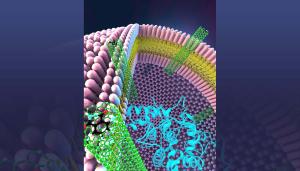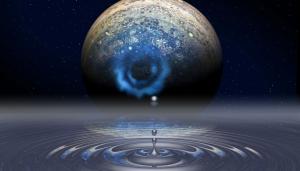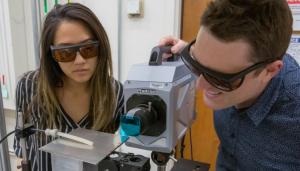LAB REPORT
Science and Technology Making Headlines
Jan. 26, 2018


Aaron Hernandez (in jersey No. 81), of the New England Patriots, lost his helmet during this play against the New York Jets in 2011. Hernandez died in 2017, and researchers found that he had one of the most severe cases of CTE ever seen in someone his age.
It comes to a head
From battle grounds to football fields, the world has learned that when the brain rattles around inside the skull, there is a possible link between concussions and the degenerative brain disease chronic traumatic encephalopathy (CTE).
Many high-profile NFL stars have developed CTE, and parents are increasingly worried about how concussions may affect their children who play sports.
Lawrence Livermore and collaborators identified evidence of early chronic traumatic encephalopathy (CTE) brain pathology after head impact -- even in the absence of signs of concussion. Early indicators of CTE pathology not only persisted long after injury but also spread through the brain, providing the best evidence to date that head impact, not concussion, causes CTE.


A single chain of water molecules lines the cavity inside a carbon nanotube porin, which is embedded in a lipid bilayer. Image by Y. Zhang and Alex Noy/LLNL
Going with the flow
Lawrence Livermore scientists are trying to address water shortages, and they’re delving into carbon nanotubes that are barely one atom wide.
LLNL's Alex Noy has spent nearly 20 years studying the potential of tiny carbon nanotubes -- 50,000 times thinner than a human hair -- to separate salt from water. He and his colleagues published findings last year that showed how using a thinner nanotube greatly increases the rate at which water can pass through a desalination filter.
It turns out that using a thinner tube facilitates a smoother, albeit single-file, flow. The salt molecules are too wide to pass through, and freshwater flows out the other side. In Noy’s recent experiments, saltwater has passed through the nanotubes six times faster, using 25 percent less energy than it would to pass through desalination systems now in use.

Smart windows are transparent when it's dark or cool and automatically darken when the sun is too bright. Credit: istock
Making a smarter window
Imagine a smart window that becomes transparent when it is dark or cool but darkens when the sun is bright and then converts that sunlight into electricity.
Typical smart windows absorb or reflect sunlight without actually converting the solar energy into a useful form. However, the new photovoltaic windows would convert the sunlight on bright days into energy that provides key stepping-stones for integration with buildings, automobiles, information displays and many other technologies.
The research team, made up of Lawrence Livermore National Laboratory scientist Steven Hawks and colleagues from UC Berkeley, Lawrence Berkeley National Laboratory, Shanghai University, Purdue University and Stockholm University, discovered that a form of perovskite works surprisingly well as a stable and photoactive semiconductor material that can be reversibly switched between a transparent state and a non-transparent state, without degrading its electronic properties.


An artistic rendering of the interface between a photo-absorbing material and an aqueous electrolyte.
Hydrogen finds its place in the sun
When Lawrence Livermore scientist Tadashi Ogitsu leased a hydrogen fuel-cell car in 2017, he knew that his daily commute would change forever. There are no greenhouse gases that come out of the tailpipe, just a bit of water vapor.
The market for hydrogen cars is growing. According to a recent report by the California Energy Commission and the California Air Resources Board, the state is now home to 31 hydrogen fuel stations.
The next challenge is making hydrogen fuel cost-effective and sustainable.
"Hydrogen can be produced from multiple sources, but the holy grail is to make it from water and sunlight," said Ogitsu, a staff scientist at LLNL and a steering committee member for the HydroGEN Advanced Water Splitting Materials Consortium, a Lab-led consortium in the Department of Energy's (DOE) Energy Materials Network. It is focused on hydrogen production from water via advanced high and low temperature electrolysis, as well as photoelectrochemical and solar thermochemical processes.


Through the two-photon lithography (TPL) 3D printing process, researchers can print woodpile lattices with submicron features a fraction of the width of a human hair. Photo by James Oakdale/LLNL
Read the small print
Lawrence Livermore National Laboratory is known for its in-depth materials research, which often involves advanced 3D printing techniques.
Those techniques include 3D printing on the nanoscale, and the Laboratory recently made a discovery that can increase the capability of a type of nanoscale 3D printing. Two-photon lithography is a high-resolution 3D printing technique capable of producing nanoscale features smaller than one-hundredth the width of a human hair.
LLNL’s discovery extends its potential, as well as opening the potential for X-ray computed tomography (CT) to noninvasively analyze stress or defects in embedded 3D printed medical devices or implants.





